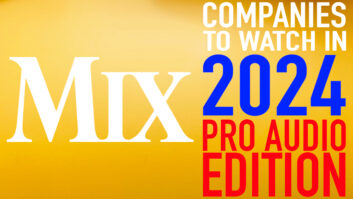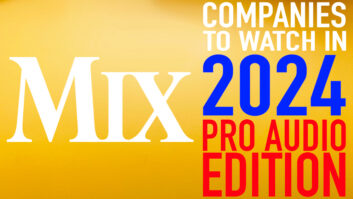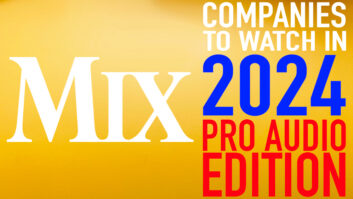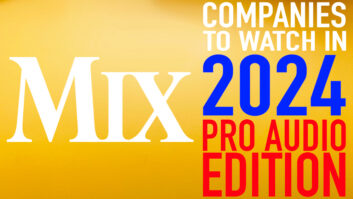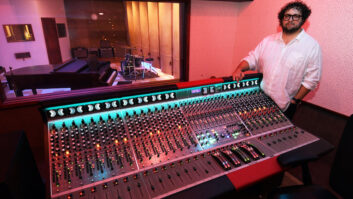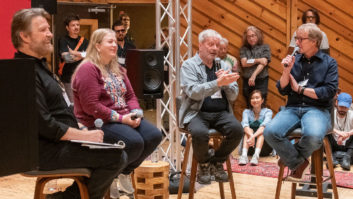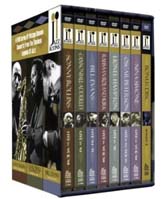
From Jazz Icons, Box 3: Cannonball Adderley, Bill Evans, Nina Simone (Reelin’ in the Years Productions/Naxos)
Is there no bottom to the well of incredible jazz footage the folks at Reelin’ in the Years Productions have access to? This marks the third batch of DVDs featuring the giants of jazz culled from the archives of European TV stations, spanning from 1958 to 1975, with most of the performances coming from ’63-’68. As always, the quality on these discs is superb: The mostly black and white footage is in nearly all cases remarkably crisp and clear, the sound mostly top-notch given its origins from mono telecasts. I really believe you can learn more about these artists watching an hour or 90 minutes of them performing in close-up, interacting with their talented bandmates, than you can from merely listening to them. These DVDs offer a window into their souls…and in every case it’s quite a sight! The booklets that accompany each one are filled with informative essays, remembrances by friends, family and colleagues, and excellent photos and memorabilia. The Jazz Icons series has deepened my appreciation of these artists—and jazz in general—so much; it’s like taking a entertaining Master Class with the coolest professors you can imagine!
Of course, everyone will have his/her own favorites in this collection. Each is available individually and also as part of an eight-CD box (details below). This time out I’ve chosen to focus on my three favorites from the box: Bill Evans, Cannonball Adderley and Nina Simone.
The Evans disc really sparkles with his quiet inspiration. Its 18 tracks—all trios (plus saxophonist Lee Konitz on the France ’65 section)—are drawn from five different settings between 1964 and 1975, and though Evans himself transforms during that period from a guy who looks like an accountant to a long-haired and bearded boho, his music remains amazingly consistent—sometimes lacy and delicate, other times gracefully swinging; always personal and expressive. There are a couple of nice takes on “Someday My Prince Will Come” from 1970, and the tune that kicks off the disc, “My Foolish Heart,” is breathtakingly beautiful. There are also a couple of slightly more abstract pieces in the ’75 section that show off his emotional range to good effect.
The stunning Cannonball Adderley disc features one of the great jazz bands of the ’60s—Cannonball on alto sax, his prodigiously talented brother Nat on cornet, Yusef Lateef on tenor, flute and oboe, a young Joe Zawinul on piano, Sam Jones on bass and Louis Hayes on drums. Captured in Sweden and Germany in 1963, some of this music sounds European to me—perhaps because so many French and Italian films of the era used this sort of breezy, swinging jazz in their soundtracks. I hear “Jive Samba” and I see jet-set skiers cavorting in the Italian Alps at Cortina! This group has no problem easily negotiating some really difficult and fast changes on tunes like “Bohemia After Dark” and “Dizzy’s Business” (which strikes me in parts as a precursor to some of the ideas Zawinul would get into with Weather Report a number of years later), but they can also get down on simpler, solid blues changes, as on “Trouble in Mind” (with Lateef outstanding on oboe), and their famous jazz spiritual, “Work Song.” I’d never actually seen the Adderleys (nor early Zawinul) perform before, so this disc was really a treat for me.
The other disc I’d like to highlight this time ’round features the remarkable, idiosyncratic vocalist Nina Simone. (Each of the three Jazz Icons boxes has included one DVD by a singer— Sarah Vaughan and Ella Fitzgerald were the first two showcased.) Simone’s music is hard to classify because it encompasses so many styles—jazz, blues, gospel, folk, soul—and lyrically she is so far from the traditional jazz canon, she’s really her own idiom (and the truth is she bristled at being called a “jazz” singer, believing it was another racist assumption made by white people.) Central to her music was the African American experience, and there is a heavy socio-political slant to many of her songs. Over the course of these 12 songs there’s anger, disillusionment, sadness…but also some humor (“Go Limp”), great tenderness and also defiance—quite a range of emotions. In the first batch of tunes, from Holland in 1965, her stirring and relentless take on Dylan’s “The Ballad of Hollis Brown” is a real tour de force—she practically dances as she sits at the piano. The version of perhaps her best known song, “Mississippi Goddam,” mixes a sort of Broadway/cabaret approach with incisive lyrics about racism that pull no punches. On the second set of tunes, from England 1968, Simone’s set really takes off when she sings re-worked versions of “Ain’t Got No” and “I Got Life” from the musical Hair, which was brand-new at the time. “Backlash Blues” offers more commentary on the black-white divide, and The Animals’ “Don’t Let Me Be Misunderstood” takes on a completely different quality in her hands. (The sound on the ’68 material is a bit hissy, but it’s still a great performance, so I’m happy it was included.)
* * *
I would be remiss if I didn’t mention the other DVDs in the 2008 box: There’s vibraphonist Lionel Hampton fronting a big band in 1958; saxophone titan Sonny Rollins live in ’65 and ’68 (a real creative peak for him); pianist Oscar Peterson sounding great in ’63-’65, breezily moving through both standards (“Satin Doll,” “Misty,” etc.) and tunes that would become the new jazz standards (“Bags’ Groove,” “On Green Dolphin Dtreet”); and volcanic reeds wild man Rahsaan Roland Kirk from 1963 and 1967. A bonus disc that is available only with the box includes more from Kirk, Simone and Rollins.
We’ll be back in a couple of weeks with some pre-Christmas picks! You can contact me at [email protected].
